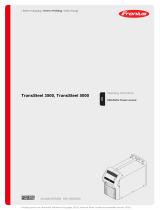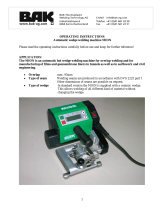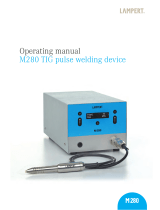
Contents
For your safety
Item No.: 099-004934-EWM01 5
5.2.3
Latched operation.........................................................................................................45
5.2.4 Spots.............................................................................................................................46
5.2.5 Interval..........................................................................................................................47
5.2.6 MIG/MAG automatic cut-out.........................................................................................47
6 Commissioning ....................................................................................................................................48
6.1 General ........................................................................................................................................48
6.2 Area of application – proper usage..............................................................................................48
6.3 Installation....................................................................................................................................48
6.4 Mains connection.........................................................................................................................48
6.5 Machine cooling...........................................................................................................................48
6.6 Adding coolant.............................................................................................................................49
6.6.1 List of coolants..............................................................................................................49
6.7 Workpiece lead, general..............................................................................................................49
6.8 Welding torch and workpiece line connection .............................................................................49
6.8.1 Intermediate tube package connection ........................................................................52
6.8.1.1 Wire feed unit................................................................................................52
6.8.1.2 Welding machine...........................................................................................53
6.9 Shielding gas supply....................................................................................................................54
6.9.1 Connecting the shielding gas supply............................................................................54
6.9.2 Gas test or "rinse tube package"..................................................................................55
6.9.3 Setting the shielding gas quantity.................................................................................55
6.10 Inserting the wire electrode..........................................................................................................56
6.10.1 Removing the wire feed unit cover...............................................................................56
6.10.2 Fixing of the pin reel (adjustment of the pre-tensioning)..............................................56
6.10.3 Inserting the wire spool.................................................................................................57
6.10.4 Changing the wire feed rollers......................................................................................57
6.10.5 Inching the wire electrode ............................................................................................58
6.10.6 Spool brake setting.......................................................................................................59
7 Maintenance and care..........................................................................................................................60
7.1 General ........................................................................................................................................60
7.2 Cleaning.......................................................................................................................................60
7.3 Repetition test..............................................................................................................................60
7.3.1 Test intervals and scope...............................................................................................61
7.3.2 Documentation of the test ............................................................................................61
7.3.3 Visual inspection...........................................................................................................61
7.3.4 Measurement of protective conductor resistance ........................................................61
7.3.5 Measurement of insulation resistance..........................................................................62
7.3.6 Measuring the leakage current (protective conductor and contact current).................62
7.3.7 Measuring the open circuit voltage...............................................................................62
7.3.8 Function test of the welding machine...........................................................................62
7.4 Repair Work.................................................................................................................................63
7.5 Disposing of equipment ...............................................................................................................64
7.5.1 Manufacturer's declaration to the end user..................................................................64
7.6 Meeting the requirements of RoHS .............................................................................................64
8 3-Year Warranty....................................................................................................................................65
8.1 General Validity............................................................................................................................65
8.2 Warranty Declaration...................................................................................................................66
9 Operating problems, causes and remedies ......................................................................................67
9.1 Customer checklist.......................................................................................................................67
10 Accessories, options...........................................................................................................................68
10.1 General accessories....................................................................................................................68
10.2 Options.........................................................................................................................................69
11 Circuit diagrams...................................................................................................................................70
11.1 WEGA KG, KW (M1.01)...............................................................................................................70
11.2 WEGA KG, KW (M1.02)...............................................................................................................71
11.3 WEGA KG, KW (M2.20/M2.40) ...................................................................................................72






















